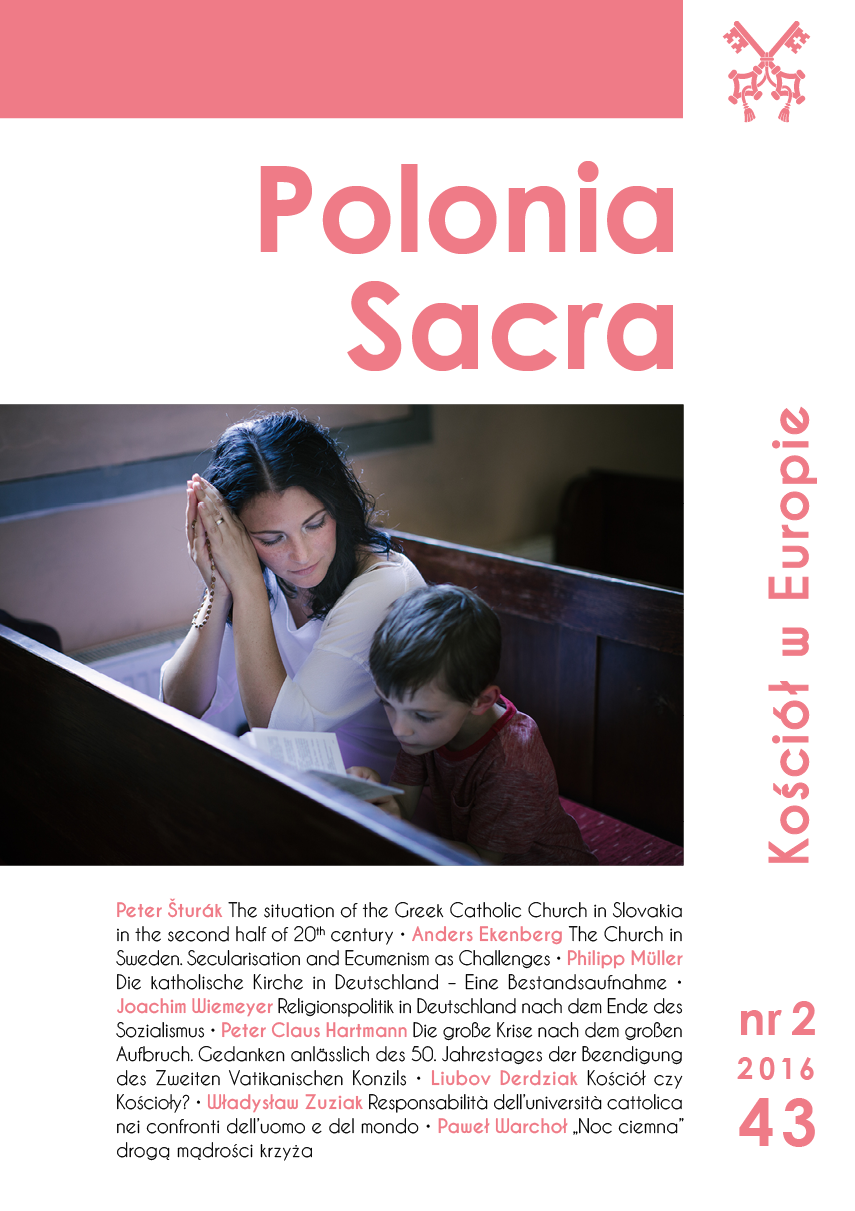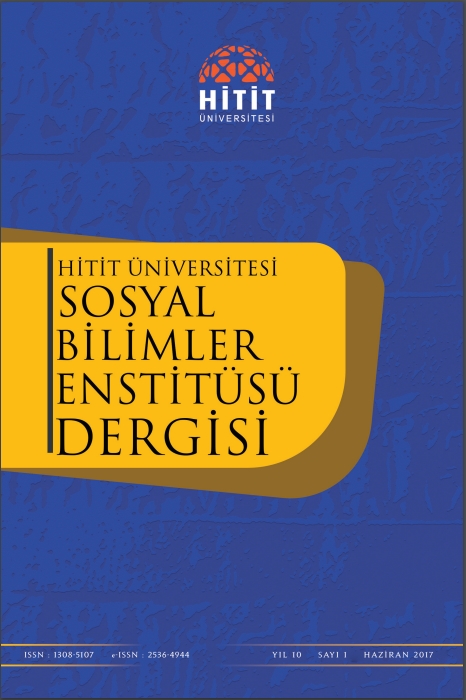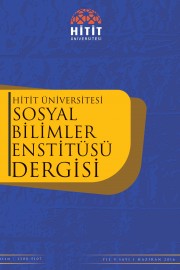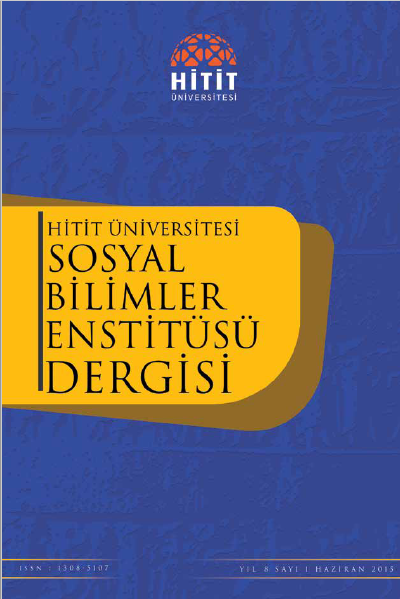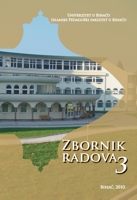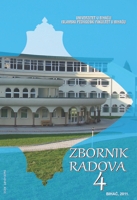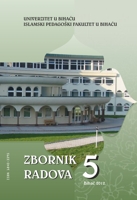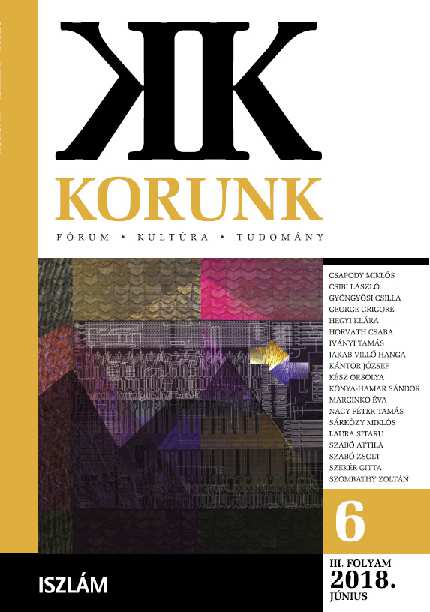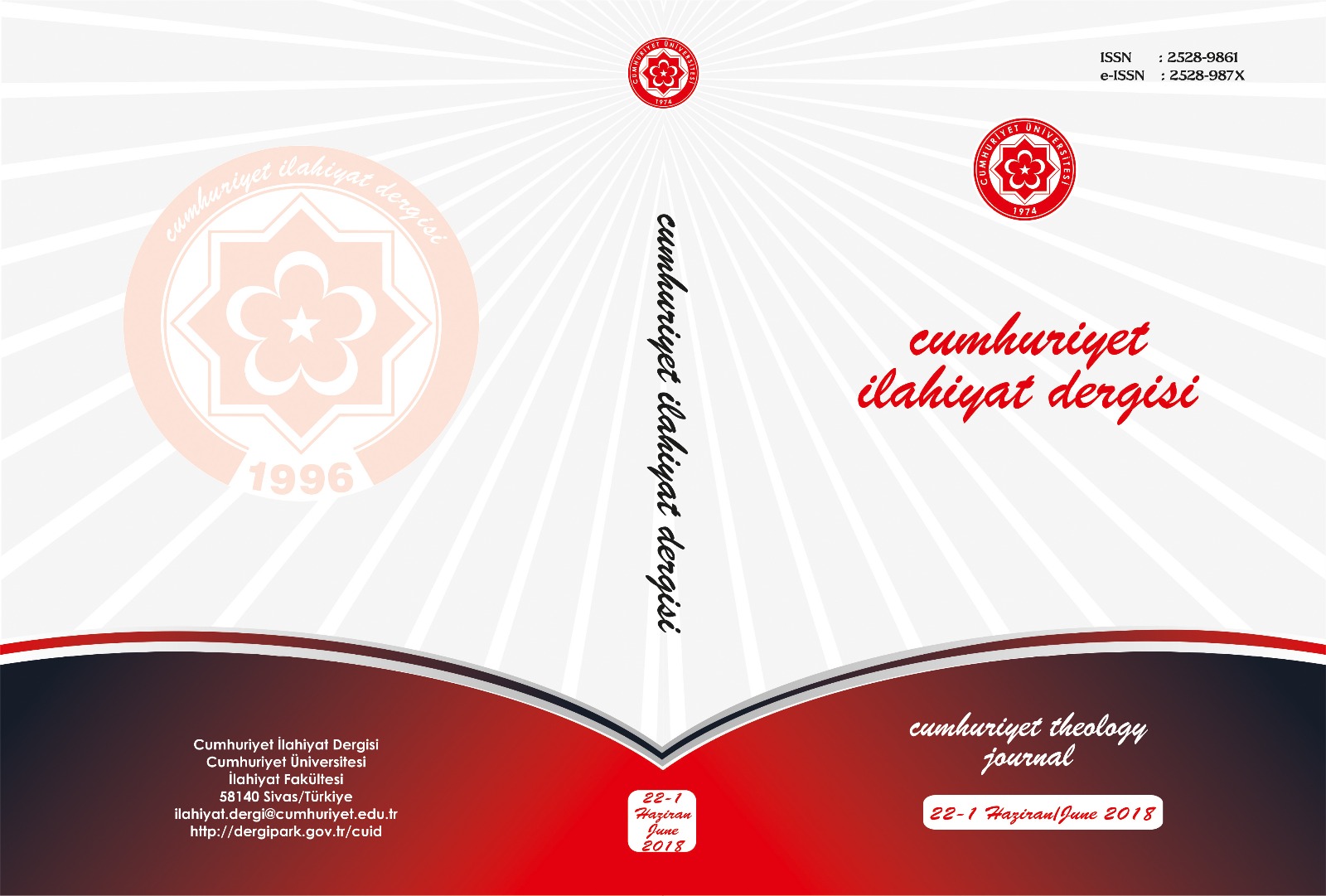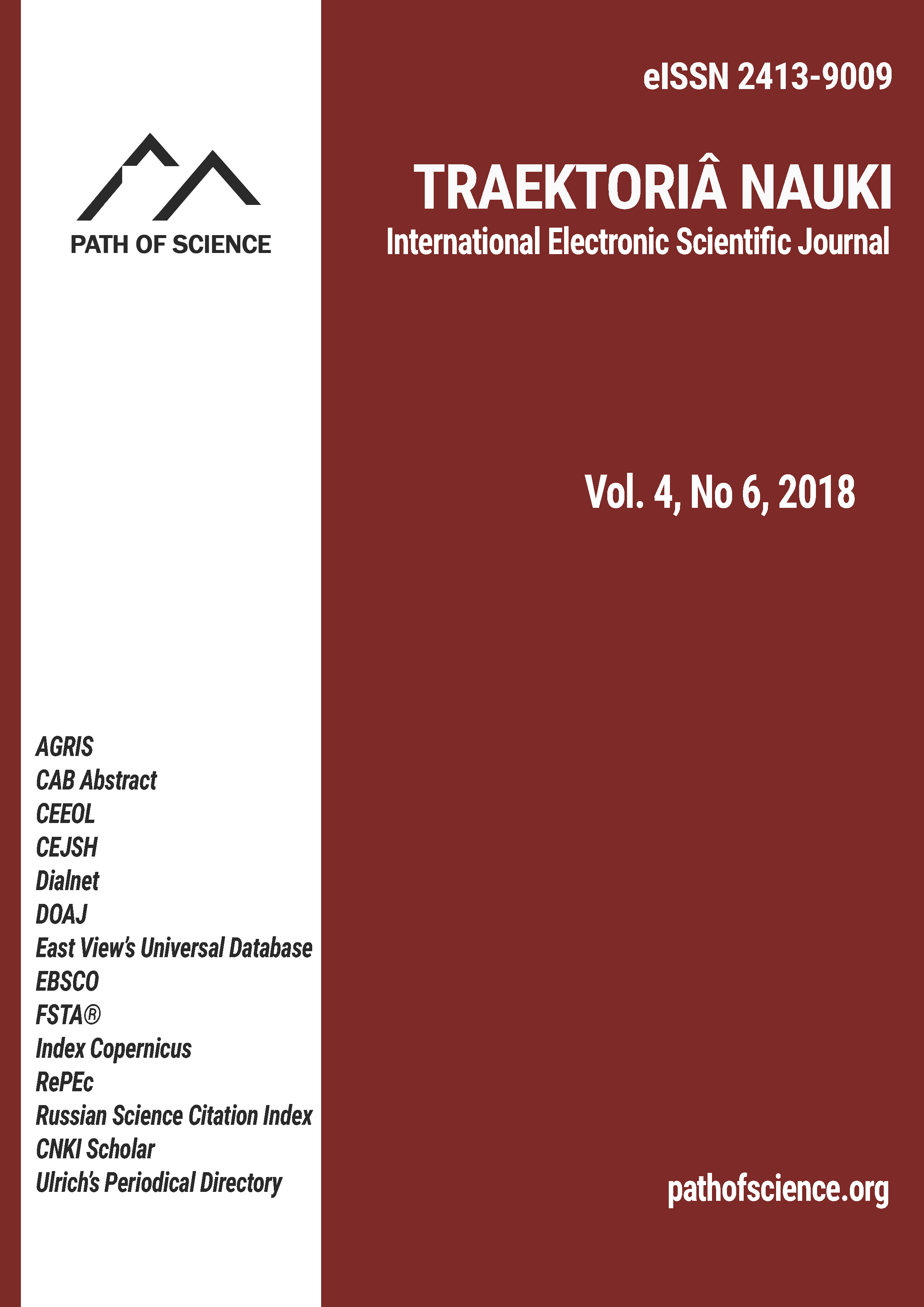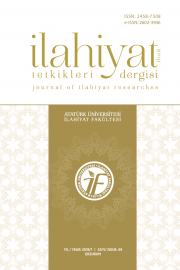Author(s): Ali Kaya / Language(s): Turkish
Issue: 1/2018
Hadiths that have been discussed in this paper consist of narrations regarding divine attributes and having some problematic meanings between supporters of Bişr al-Marīsī and ʿUthmān al-Dārimī. These narrations were mostly accepted denounced (munkar) by Bişr al-Marīsī and his sopporters due to having an anthropormophist and corporealist content about God. They rejected divine attributes according to their understanding of God based on incomparability (tanzīh) which provided by Mutazilite approach towards divine attributes even though they conveyed some features of Ahl al-Ra’y. They found contradicted of attributing human features to God based on their tanzīh understanding, therefore, they interpreted such this kind of narra-tions in terms of their approach or rejected at all. At the other hand, a hard Hadith scholar Uth-man al-Darimi believed that one should accept divine attributes as they are in the Qur’an and Sunna. According to his belief, he considered the explicit meanings of the narrations without interpretation of divine attributes, and based on his perpective he denied Bişr al-Marīsī and his supporters’ interpretations claiming they would cause divesting God of all attributes (ta‘tīl). He argues that these narrations should be taken into considerations based on their explicit mea-nings. The discussions on these hadiths are important due to showing different approaches of scholars from the schools of Ahl al-Ra’y and the ones from Ahl al-Hadith towards the hadith du-ring the period when the main Hadith works were collected. Discussions on the narrations stu-died in this paper reveal two schools’ understandings of divine issues, their approaches to divi-ne attributes, as well inform us their perspectives of hadith in general.Summary: The present paper examines the debates between ʿUthmān al-Dārimī (d. 280/894) and the supporters of Bishr al-Marīsī (d. 218/833) on the divine attributes mentioned in some hadiths in the period when the main hadith books were composed (i.e., III/IXth century). These debates that took place between the scholars of Ahl al-Hadith and Ahl al-Ra’y concern the un-derstanding and interpretation of the hadiths in a certain way.It could be stated that the debates focus on how the hadiths should be understood, or whether it is the explicit meaning of the words or the possible methaphorical meanings beyond them that should be considered.It is worth briefly introducing the parties who discussed the hadiths studied here. The aforementioned discussions about some hadith narrations are between the supporters of Bishr al-Marīsī and ʿUthmān al-Dārimī, one of the important figures of the Ahl al-Hadith who wrote a separate work on these hadiths. This work was written as a rejection of the views of Bishr al-Marīsī and his two students on the attributes of God and some issues regarding hadith.Bishr al-Marīsī was regarded as an important scholar of Kalam who received fiqh education from Abū Yūsuf (d. 182/798). He is a scholar of Ahl al-Ra’y who made scientific dis-cussions with many scholars including Imam al-Shafiʿī (d. 204/820). He was on the council of the Caliph Al-Mamūn (d. 218/833) and had a significant role in the adoption of the idea of the createdness of the Qurʾān (khalq al-Qurʾān).Uthmān al-Dārimī,on the other hand, was a scholar of Ahl al-Hadith who learned ha-dith from the authorities of his era such as Yaḥyā b. Maʿīn (d. 233/847), ʿAlī b. al-Madīnī (d. 234/848), Isḥāq b. Rāhawayh (d. 237/851), and Aḥmad b. Ḥanbal (d. 241/855). Having visited all the important cities for the training of hadith, he learned the hadiths and conveyed them.With the understanding of proving the divine attributes and the opposition of the misin-terpretation of the narratives related to them, the groups advocating the appropriation of these lines in accordance with the understanding of incomparability (tanzīh) have complied the works since the first period. According to ʿUthmān al-Dārimī, the rejection of the divine attributes by Mu'tazila was influential in the emergence of the criticism literature of the Ahl al-Hadith and many authors wrote works in this direction.Regarding a narration by Abū Hurayra, an opponent reports that this narration gives the impression that God has the eyes and ears as we know. ʿUthmān al-Dārimī reports that this hadith proves sight and hearing not the eyes and ear organs. He indicates that God has no like by no means. Therefore, it is slanderous to refer the claim that Allah is made of organs to the Ahl al-Hadith. Abū Dāwūd states that with this hadith the attributes of sight and hearing for God are proved and Jahmiyya’s denial of the divine attributes are rejected.The opponent also considered Abū Hurayra's narration referring to the Prophet: "Faith is from Yemen, wisdom is from Yemen! I feel the breath of your Lord from Yemen!" as denounced (munkar). Because, according to Bishr al-Marīsī and his companions, breath can only come from those with an abdominal cavity, and Allah is free from it. According to ʿUthmān al-Dārimī, the opponent misunderstood. What is meant here is the wind that blows from Yemen and comforts people. In the context of this narration, we see that supporters of Bishr al-Marīsī evaluate the narrative literally, while ʿUthmān al-Dārimī interpret the narrative.Regarding the narration, "You can not approach Allah with something more virtuous than what comes out of it (the Qur'ān)" Ibn al-Saljī reports that Mushabbiha understands this as one with an abdominal cavity and from whom speech comes out. This understanding is in-valid since God is "samad" in the sense that He has no void. With this hadith, it is meant that the Qur'ān comes out of Allah’s presence rather than Allah. According to ʿUthmān al-Dārimī, the real aim of Ibn al-Saljī is to deny God's attribute of speech. There is no doubt that the Qur'ān comes from Him, and those who do not accept it merely deny His attribute of speech.Attributed to Ibn Abbas; The meaning of "yamīn Allah" (the right hand of Allah) in narration "Black Stone (al-ḥajar al-aswad) is the right hand of Allah on earth, handshakes with the people" is not the right hand that we know according to Ibn al-Saljī, it is blessing and grace of Allah. According to ʿUthmān al-Dārimī, who acknowledges that Black Stone is not meant to be a hand, the purpose of Ibn al-Saljī is to deny the two hands mentioned in the verses and ha-diths about Allah with invalid interpretations.ʿUthmān al-Dārimī, who criticized that Ibn al-Saljī quoted from another narration which Ibn Abbās heard from the Prophet, says that such poor narrations should not be spread. In addition, he points out that Ibn al-Saljī's interpretation is ugly and he criticizes it. Because Allah who is mentioned in the narrative is depicted as a young man with curly hair in a green suit. Such a narration is also an untrustworthy narration as it contradicts the authentic narrations of the Prophet. ʿUthmān al-Dārimī, who made this assessment of the narration, rejects the com-ments that the opponent made about the narration. According to the opponent, the phrase "I have come to Allah" means "to come into the presence of Allah in the Garden of Eden." Accor-ding to ʿUthmān al-Dārimī’s understanding, such complicated hadiths should not be only narra-ted.About the narration that are based on the Prophet and he does not know the answer to what he has come to know of himself, then he feels the coolness of his fingers as he puts his hand on his back and learns everything, the opponent evaluates the following: He was not Allah who came to the Prophet, but a well-behaved angel who was being directed by Allah and he was the angel who put his hand. ʿUthmān al-Dārimī rejects this interpretation of that oppo-nent. This comment is also contrary to other authentic hadiths. After he refused to the com-ment of the opponent about relevant narration, ʿUthmān al-Dārimī stated that he could not trust this comment on the basis of the authentic narrations he mentioned.Salaf scholars have preferred to be silent in this regard, as it is seen among the most difficult subjects to talk about divine attributes. However, subsequent generations have held dif-ferent paths in this regard. The basic approaches to understanding the divine attributes can be summarized in three main titles: tafwīd, tashbīh, and ta’wīl. Tafwīd is the path adopted by the early salaf scholars and means to leaving the knowledge about Allah’s entity and attributes to His knowledge. Tashbīh means to compare Allah to the created or the created to Allah. Ta'wīl is to interpret the Qur'ānic verses and hadiths that give the impression that Allah is like the crea-tures with semantics and rational deduction. The ones who deny the adjectives are called as Muʿattila and those who prove their attributes are called as Sifatiyya. According to Ahl al-Ra’y, it is necessary to appropriately make interpretation (ta'wīl) of the attributes giving the impression of anthropomorphism in terms of the dictionary. In the divine attributes, Muʿtazila advoca-ted the incomparability (tanzīh), whereas Ashʿariyya and Māturīdiyya adopted interpretation in accordance with incomparability. Mushabbiha and the Wahhābī-Salafī understanding has also taken the expressions regarding divine attributes with their explicit meanings.The debate between the scholars who lived in the ages II/VIII and III/IX, when the most important works are composed in the science of hadith, is important in that it is the first turn. In addition to this, the debate also contains important information on the approach to the Qur'ānic verses and hadiths, in that it shows two basic approaches, one of which represents the school of Ahl al-Ra’y, and the other represents the school of Ahl al-Hadith.ʿUthmān al-Dārimī generally advocates adhering to the explicit meaning of the narra-tion, while Bishr al-Marīsī and his companions criticize the narration labeling it as denied (mun-kar) or making an interpretation. On rare occasions, the places where ʿUthmān al-Dārimī re-jects the narration and makes interpretation, or where Bishr al-Marīsī and his companions de-fend the narrative can be seen.Interpretations made by Bishr al-Marīsī on the problematic narratives have influenced on the next scholars. Alongside Muʿtazilite scholars such as al-Jubbāʾī (d. 303/916), Qāḍī ʿAbd al-Jabbār (d. 415/1024) and Abū l-Ḥusayn al-Baṣrī (d. 436/1044), his interpretations have been quoted by Sunni scholars such as al-Ghazālī (d. 505/1111), Ibn ʿAqīl (d. 513/1119) and Fakhr al-Dīn al-Rāzī (d. 606/1210).The fact that the truth can be put forward in the science of hadith, which is based on the narration, does not favor one of the "narration" and "ra’y", it should be kept in mind that both of these depend on the proper and balanced use of both. To reveal the truth, the narration is in need of the opinion and the opinion (ra’y) is in need of the narration. Narration and opinion sho-uld be seen as complementary elements, not each other's opponents.
More...
